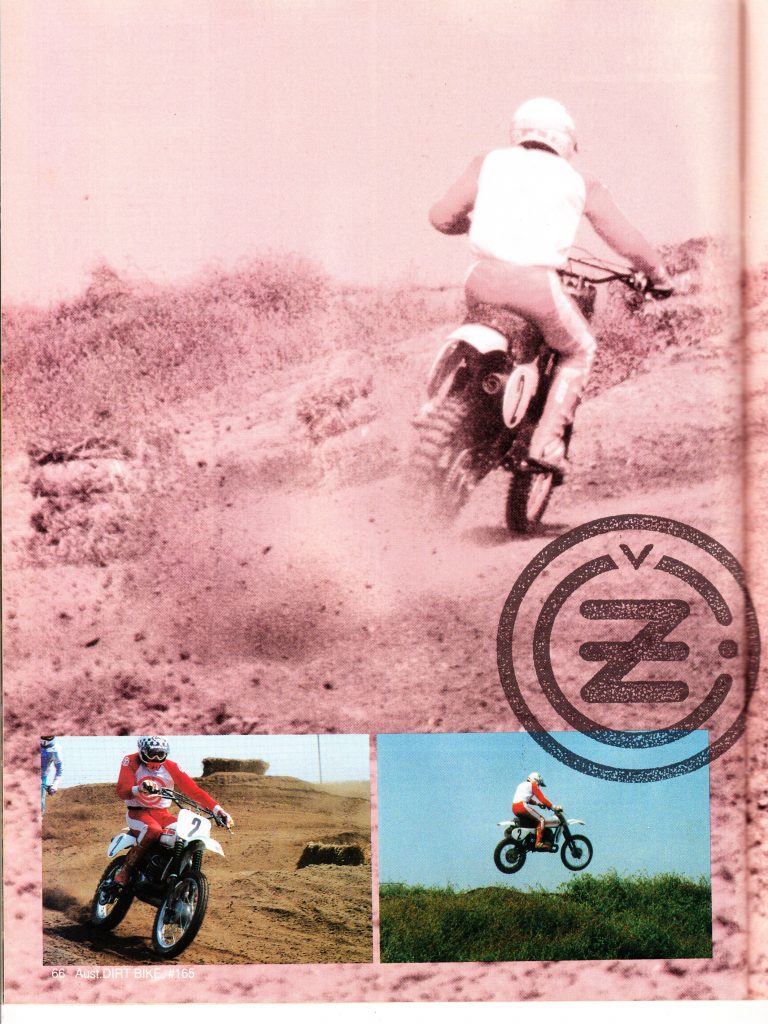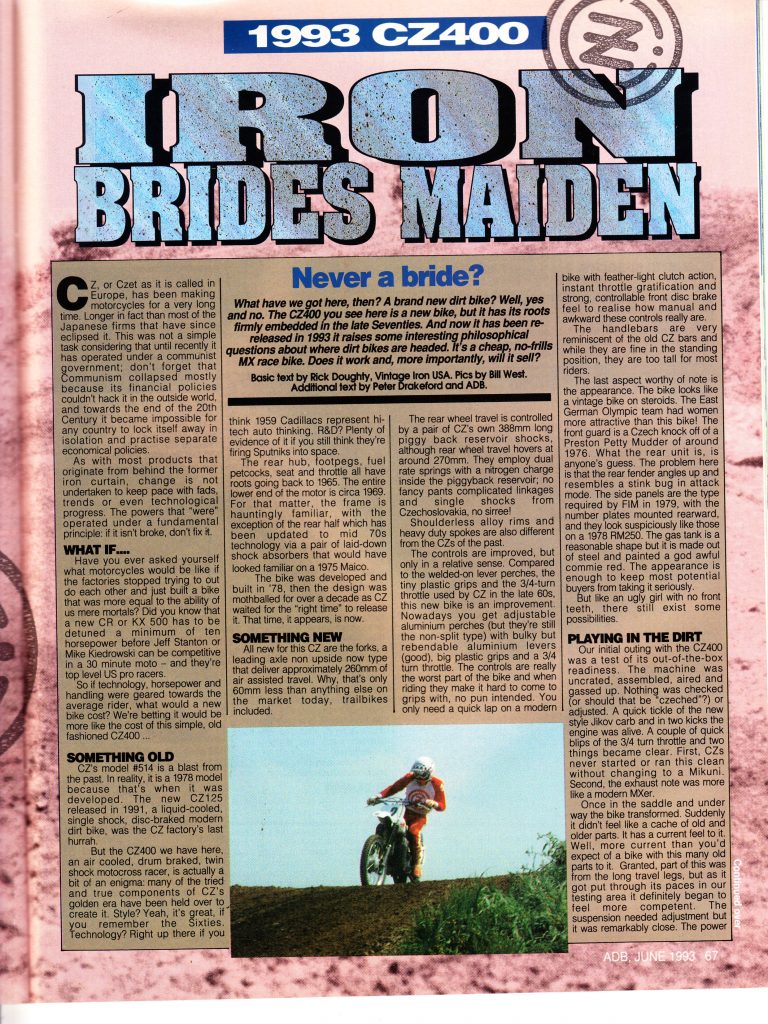WHAT 1993 CZ400
WHEN ADB #165, June 1993
PURPOSE Motocross
HOW MUCH $3199, including tools and spares kit (a Yamaha WR500 was $5999)
At first glance, the CZ400 might have seemed like the bargain of the century and, while it was good value for club-level riders, it wasn’t exactly at the cutting edge of ’90s motocross technology with its air-coiled engine and drum brakes. CZ was well past its glory days by now, having previously been able to attract a string of top-level riders such as Joel Robert, Roger De Coster and Brad Lackey.
The 400 was actually designed and developed in 1978 and, even then, used some ideas that were older. It was mothballed for over a decade as CZ waited for the “right time”. The air-assisted, leading-axle fork was new, but only offered 260mm of travel, less than many current trailbikes offer. The rear-end had 270mm but with nitrogen-charged twin shocks running dual-rate springs.
In a concession to the approach of the 20th century, CZ had ditched the shouldered Akront rims and had fitted heavy-duty spokes. The footpegs were agricultural at best – pressed steel with only three teeth to grip your boots – and the gearlever had a throw of about 100mm and a rubber tip so your boot wouldn’t be on that ‘peg
very often.
An usual feature of past CZs, welded-on lever perches, were gone but the new ones were of the non-split type favoured for road bikes that required removal of the handgrips to change them. The position could be changed, something impossible with the welded ones. The ‘bar was high, fine when standing but too tall when sitting for most, and the throttle took a three-quarter turn to hit the stop.
Appearance wise the bike looked like a bit of a throwback as well, with the side numberplates dating back to a late ’70s look, as did the front mudguard. The steel tank was painted “a gawdawful commie red” (the test bike’s one had been resprayed) and, further on, the CZ’s looks were described as a “bit like an ugly girl with no front teeth”.
When it came time to ride it, the CZ400 started after a quick tickle of the Jikov carb and two kicks. Past CZs had never started that easy or run clean without swapping to a Mikuni, and it was noted that the exhaust note also sounded more like a modern bike. Once underway it seemed to transform and testers claimed it no longer felt like a cache of old parts and had a current feel to it with strong and tractable power. As the various testers confidence in the bike increased, their lap times dropped and the general feeling was that on the right outdoor track the bike could be a threat in the 500 class.
The rear drum brake was found to be quite acceptable and the front one did its job but was not up to the standard of the discs of the day sported by other brands. It stopped the bike but there wasn’t a big risk of it locking up and spitting the rider down the track.
The test bike had been modified after the first test session with a lower handlebar, Magura levers, a Gunnar Gasser throttle, Mikuni flatslide carb, the paint job and new guards. With the exception of the carb, the changes were more to do with the personal preference of the owner than performance. The 1993 CZ400 wasn’t as good as its competitors, but only cost half as much, and the others weren’t twice as good. For the clubman rider on a budget it was a tempting choice.
Heritage Editor Warren Jack



